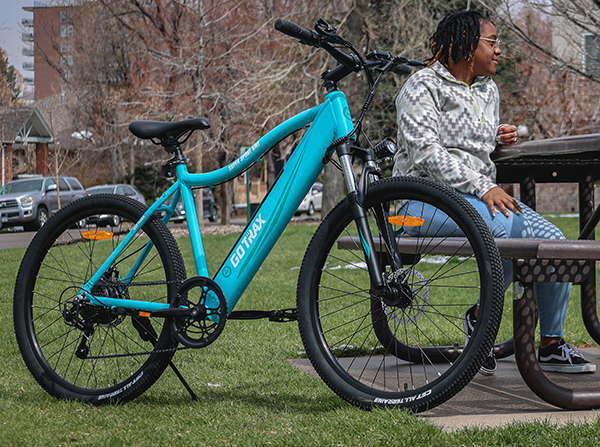#MoveTheDate
How does it #MoveTheDate?
Electric bicycles extend the usability of bicycles to a larger part of the population, replace car trips, and allow many more people to live car-free.
How is it scalable?
Electric bike technology is still in the early stages, with costs decreasing rapidly. Lower costs and more bike-friendly infrastructure will increase the use of eBikes.
How does it #MoveTheDate?
Electric bicycles extend the usability of bicycles to a larger part of the population, replace car trips, and allow many more people to live car-free.
How is it scalable?
Electric bike technology is still in the early stages, with costs decreasing rapidly. Lower costs and more bike-friendly infrastructure will increase the use of eBikes.
Electric bikes, or ‘eBikes’, increase the portion of daily trips that are possible via bicycle by making cycling accessible to those who do not usually ride bikes, such as seniors, people who need to travel longer distances, and people who live in hilly or mountainous regions. Moving a 75kg person in a 2000kg vehicle requires far more resources than a 35 kg electric bike. While traditional bicycles may be able to fulfil a large proportion of trips in mostly-flat regions, the majority of modern-day car trips are well within the comfortable range of electric bicycles.
Electric bicycles have only recently started to occupy a larger part of the bicycle market, but they are almost as old as bicycles themselves. Early patents in the 1890s include one by Ogden Bolton in the US, who proposed to build an electric motor directly into the hub of the bicycle’s back wheel. But the real breakthrough came as batteries became both lighter and cheaper.
eBikes open new possibilities – they can replace car rides in hillier landscapes, in hotter weather (where people do not want to arrive to their destinations sweaty), for slightly longer distances, or when transporting more goods. In some instances, eBike trips have displaced bicycle rides, but in others — particularly in China — they have replaced vehicles.
The use of eBikes started to grow rapidly around the world after the turn of the century. During COVID lockdowns, bicycle sales in the US increased 45% while eBike sales sored by 145%, according to the World Economic Forum.
Our current electricity grid could easily accommodate the eBike trend. Estimates in Germany claim that if half of all bicycles were electric, their energy consumption would only add up to 1/1000 of the current electricity demand in Germany.
Deloitte estimates that by 2023, 40 million eBikes will be sold every year, far exceeding sales of electric cars. This report provides a fascinating outlook chapter (p. 118-127) on the possibilities for active eBike users, including statistics that claim that “cyclists had a 52% lower risk of succumbing to heart disease than non-cyclists, and a 40% lower chance of dying from cancer”.
There’s no benefit in waiting!
Acting now puts you at a strategic advantage in a world increasingly defined by ecological overshoot. Countless solutions exist that #MoveTheDate. They’re creative, economically viable, and ready to deploy at scale. With them, we can make ourselves more resilient and #MoveTheDate of Earth Overshoot Day. If we move the date 6 days each year, humanity can be out of overshoot before 2050.

